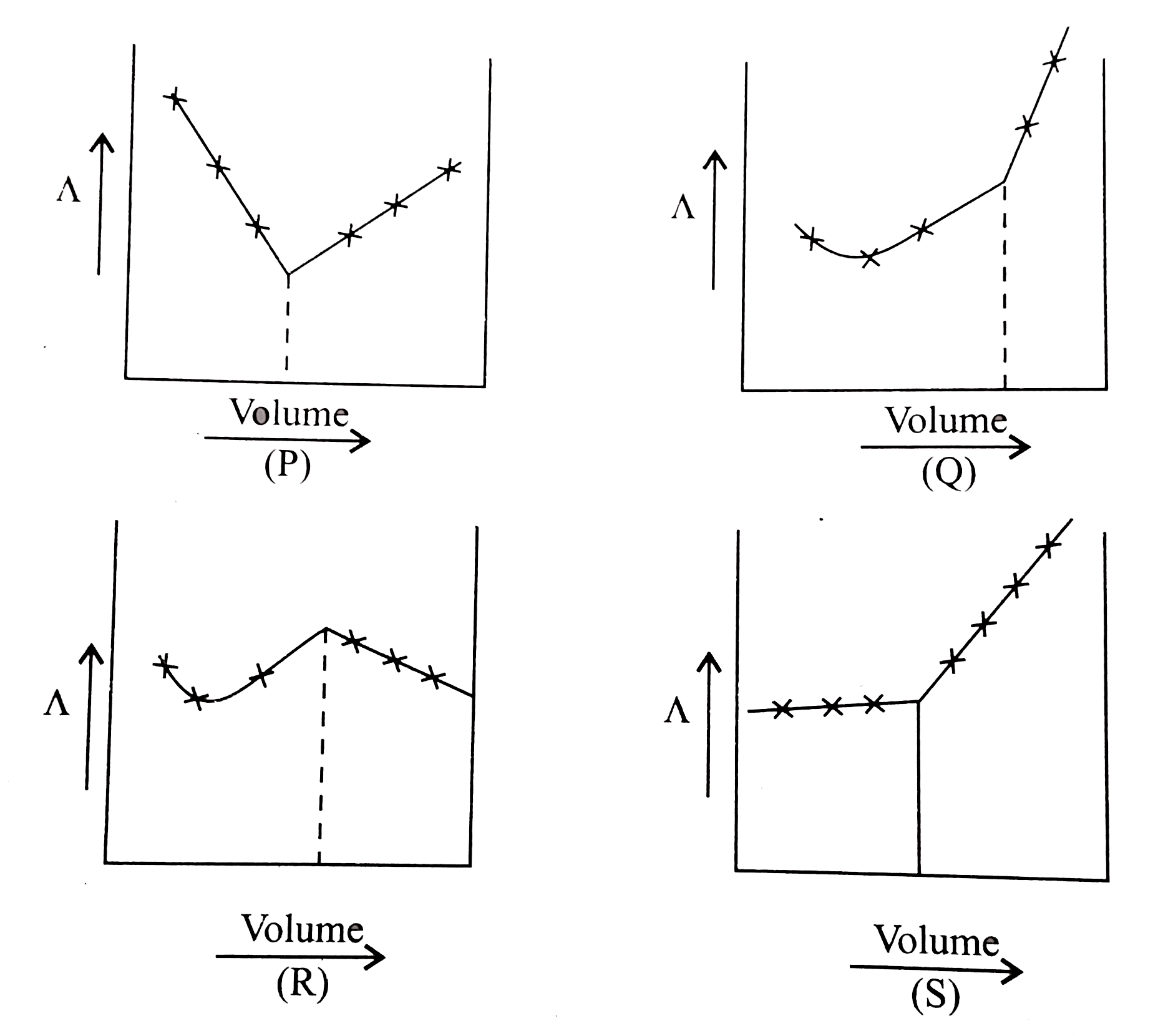How would you measure the conductivity of ionic solutions ?
Text Solution
The conductivity of an electrolytic solution is determined by using a wheatstone bridge arrangement in which one resistance is replaced by a conductivity cell filled with the electrolytic solution of unknown conductivity.
In the measurement of specific resistance of a metallic wire, a DC power supply is used. Here AC is used for this measurement to prevent electrolysis. Because DC current through the conductivity cell leads to the electrolysis of the solution taken in the cell.
A wheatstone bridge is constituted using known resistances P,Q, a variable resistance S and conductivity cell. An AC source (550 Hz to 5 KHz) is connected between the junctions A and C.
A suitable detector is connected between the junctions B and D.
The variable resistance S is adjusted until the bridge is balanced and in this conditions, there is no current flow through the detector.

Under balanced condition
P/Q=R/S
R=P/Q×S ...............................(1)
The resistance of the electrolytic solution (R) is calculated from the known resistance values P, Q and the measured S value using the equation (1).
Specific conductance (or) conductivity of an electrolyte can be calculated from the resistance value (R) using the following expression
K=1R[lA]
The value of cell constant lA is usually provided by the cell manufacturer. Alternatively the cell constant may be determined using KCl solution whose concentration and specific conductance are known.
|
Updated on:21/07/2023
Topper's Solved these Questions
Similar Questions
Knowledge Check
- Question 1 - Select One or More
Molar conductivity of ionic solution depends on_____.
AtemperatureBdistance between electrodesCconcentration of electrolysis in solutionDsurface area of electrodes. - Question 2 - Select One
AgNO2(aq) was added to an aqueous KCl solution gradually and the conductivity of the solution was measured. The plot conductivity of the solution was measured. The plot of conductance (∧) versus the volume of AgNO3 is
 APBQCRDS
APBQCRDS - Question 3 - Select One
Assertion (A): Molar conductivity of an ionic solution depends on temperature.
Reason (R): Molar conductivity of an ionic solution depends on the concentration of electrolytes in the solution.ABoth A and R are true but R is NOT the correct explanation of ABBoth A and R are true but R is NOT the correct explanation of ACA is true but R is falseDA is false and R is True
AgNO3(aq) was added to an aqueous KCl solution gradually and the conductivity of the solution was measured. The plot conductivity of the solution was measured. The plot of conductance (∧) versus the volume of AgNO3 is
 View Solution
View SolutionExplain how would you measure density of an irregular solid using a Eureka can.
View SolutionMolar Conductivity |Relation Between Conductivity And Molar Conductivity |Measurment Of The Conductivity Of Ionic Solutions|Questions|Summary
View SolutionAgNO3 (aqueous) was added to an aqueous KCl solution gradually and the conductivity of the solution was measured. The plot of conductance (A) versus the volume of
 View Solution
View SolutionFor measuring the conductivity of an electrolyte its solution should be prepared in
View Solution
